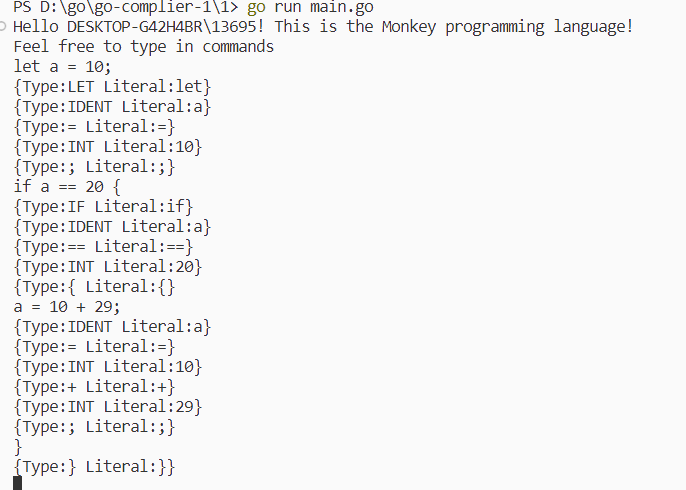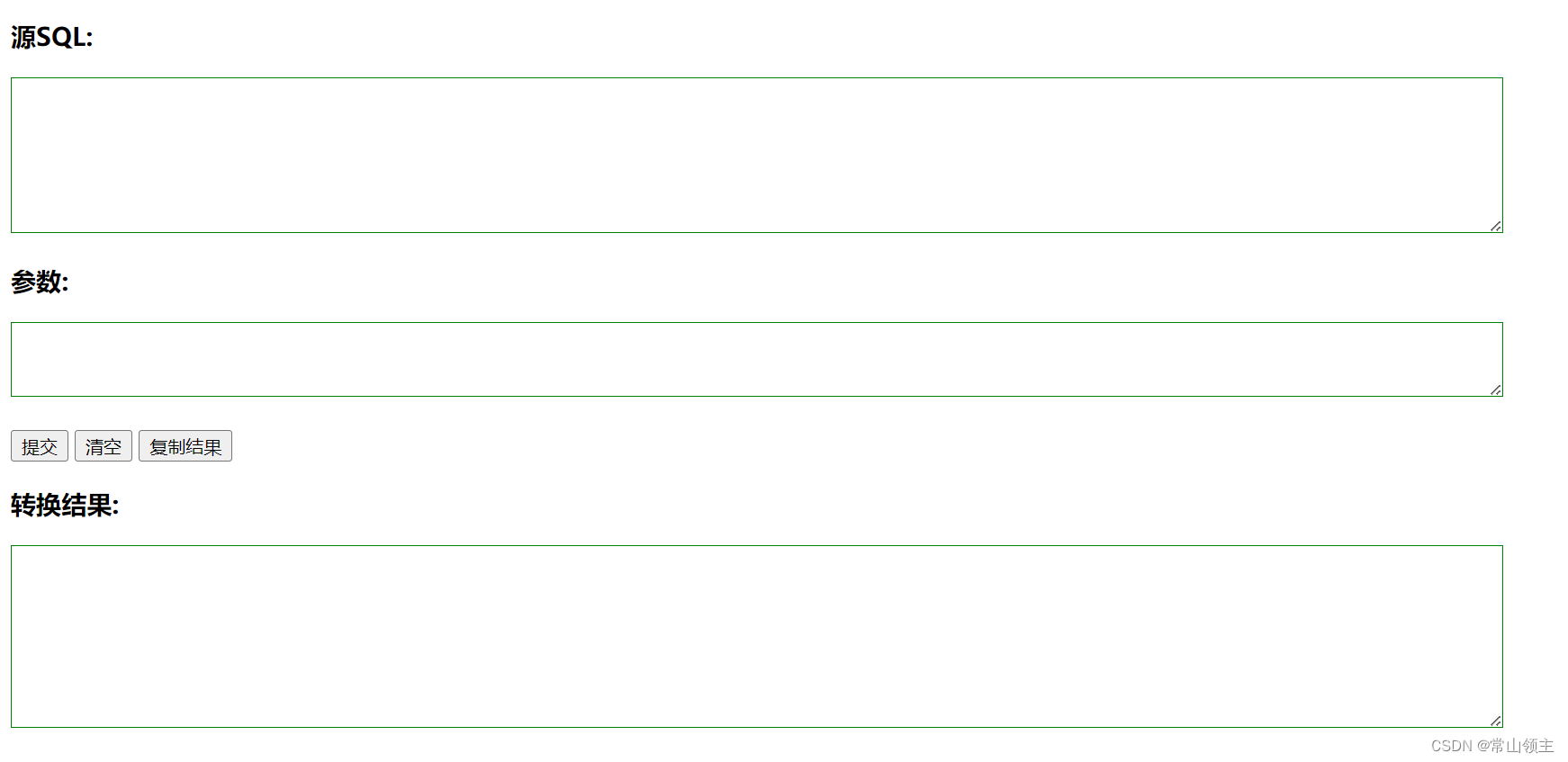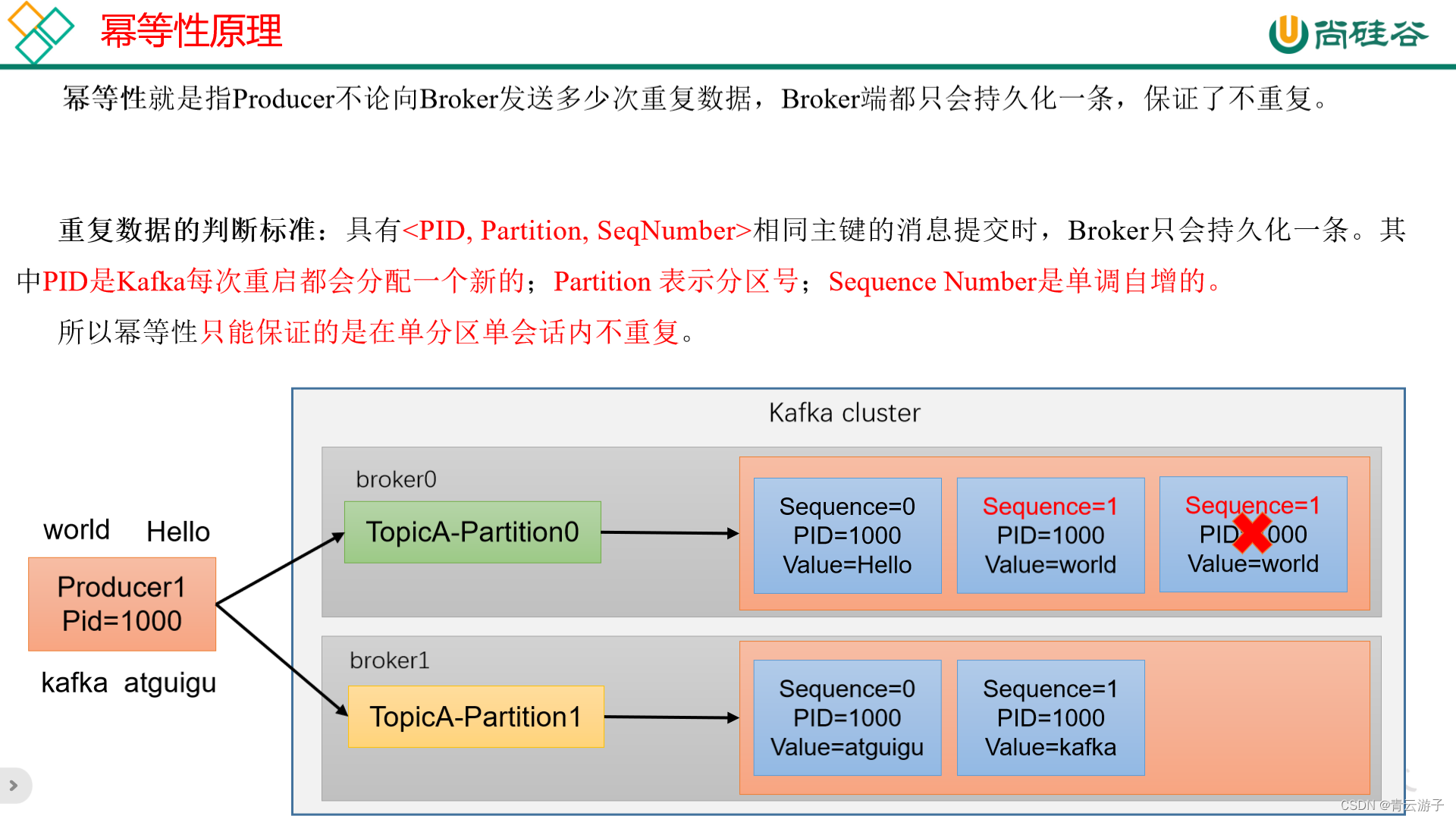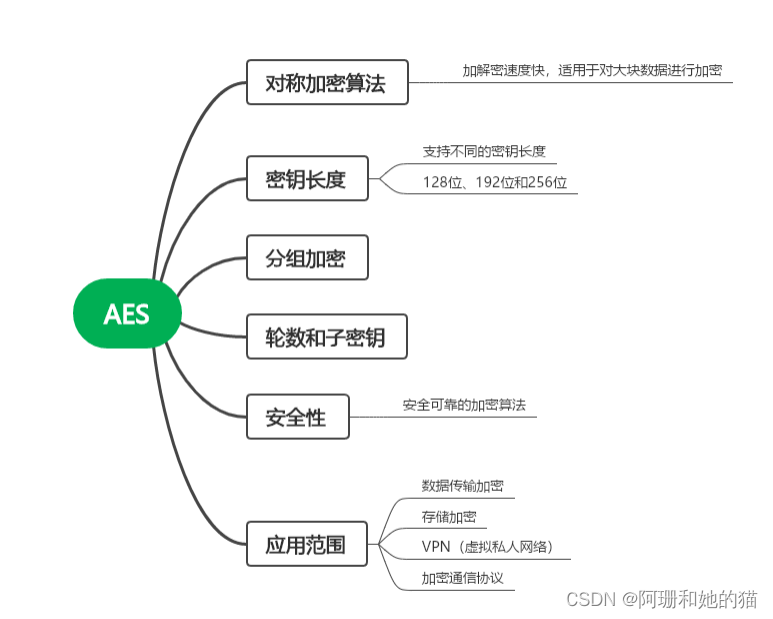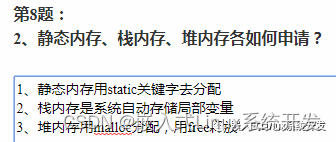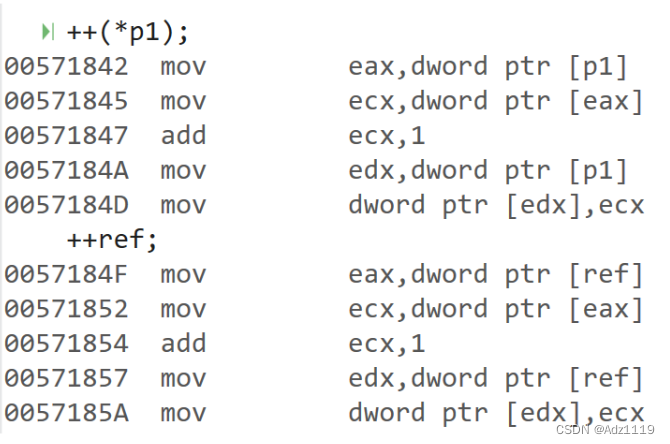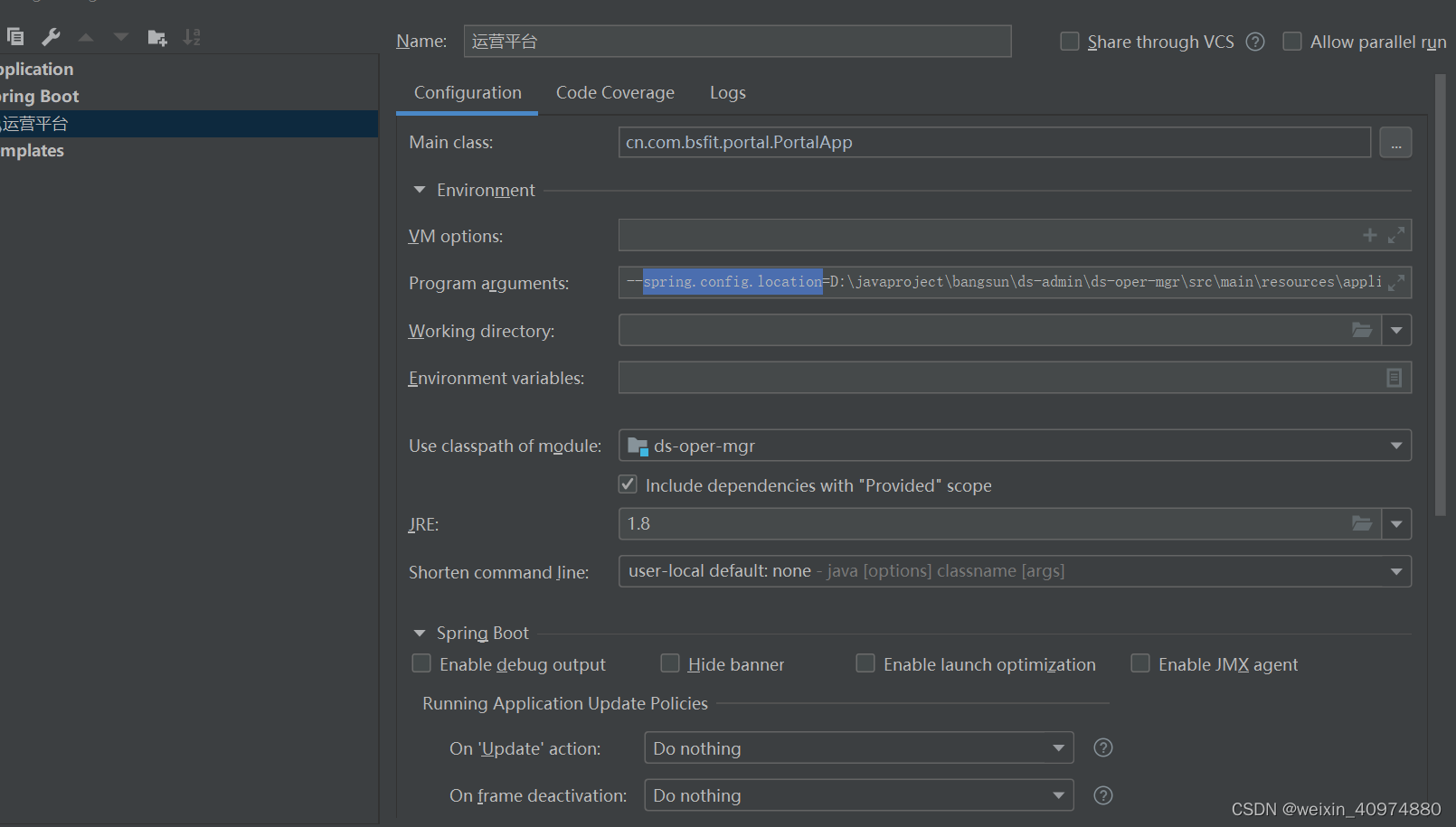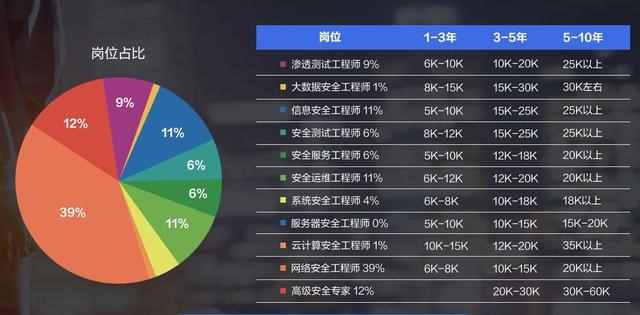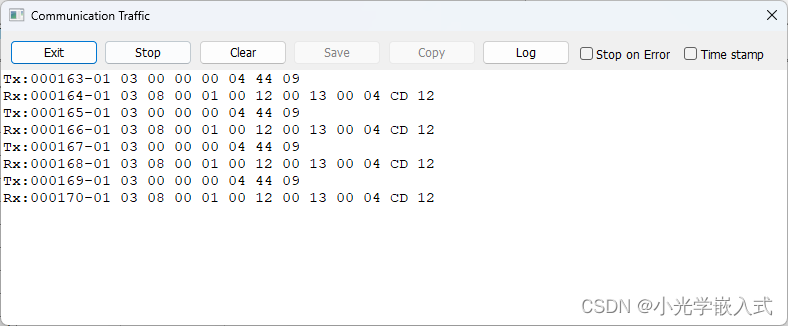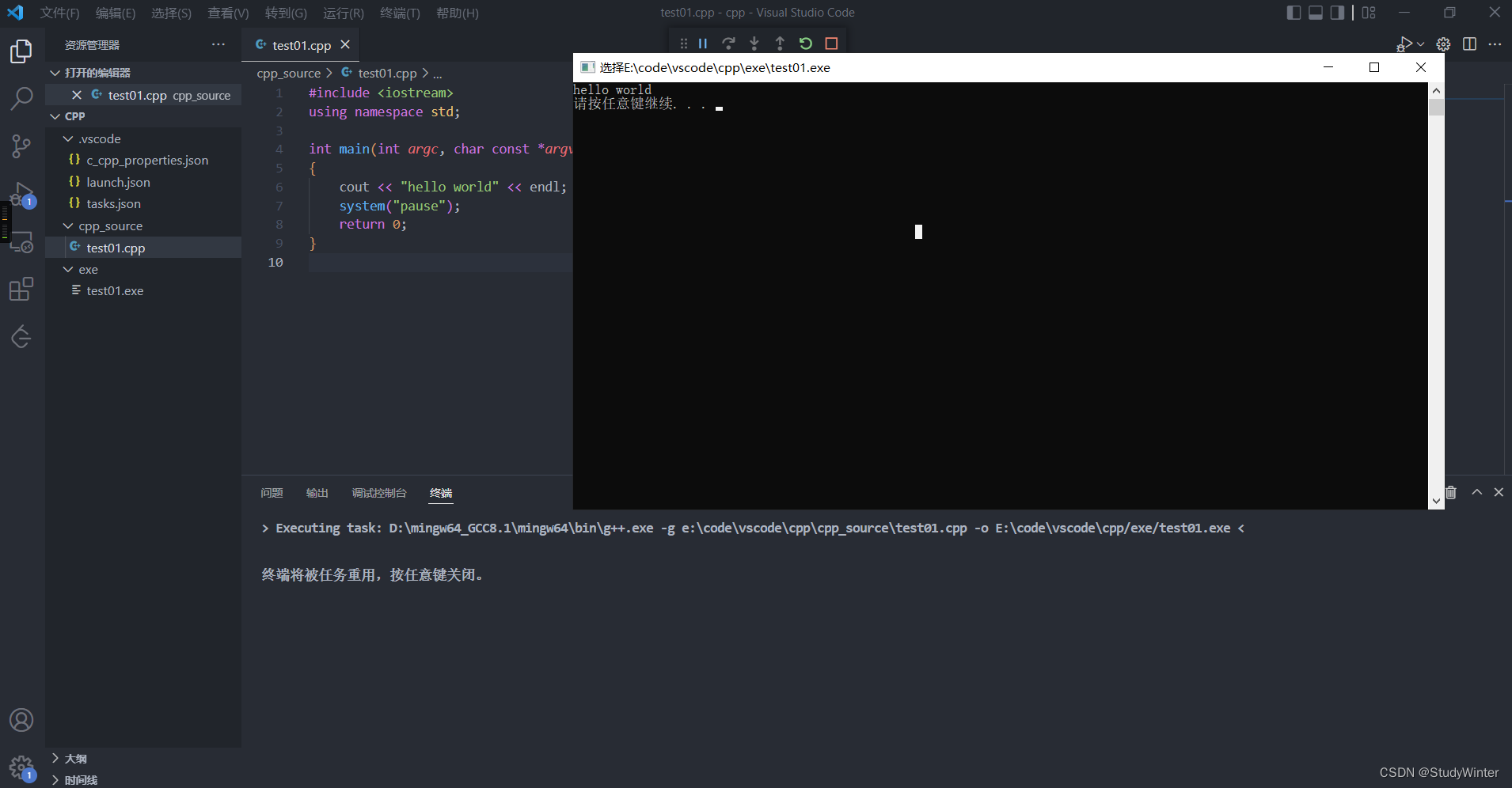本文是《用go实现解释器》的读书笔记

https://malred-blogmalred.github.io/2023/06/03/ji-suan-ji-li-lun-ji-shu-ji/shi-ti/go-compile/yong-go-yu-yan-shi-xian-jie-shi-qi/go-compiler-1/#toc-heading-6![]() http://个人博客该笔记地址
http://个人博客该笔记地址
github.com/malred/malang![]() http://代码仓库
http://代码仓库
1. 词法分析
1.1 词法分析
为了解释源代码,需要将其转换为易于理解的形式, 最终对代码求值之前, 需要两次转换源代码的表示形式

词法分析器的作用如下:
let x = 5 + 5; -> [LET,INDENTIFIER(“x”),EQUAL_SIGN,INTERGER(5),PLUS_SIGN,INTERGER(5),SEMICOLON] 设 x = 5 + 5;-> [LET,INDENTIFIER(“X”),EQUAL_SIGN,INTERGER(5),PLUS_SIGN,INTERGER(5),SEMICOLON]
不同词法分析器生成的词法单元会有区别
-
空白字符不会被识别(python 等语言会)
-
完整的词法分析器还可将行列号和文件名附加到词法单元中,后续语法分析可以更好地报错
1.2 定义词法单元
先定义词法分析器输出的词法单元 这是要解析的语句段(Monkey 语言)
let five = 5;
let ten = 10;
let add = fn(x,y) {
x + y;
}
let result = add(five, ten);-
数字都是整数,按字面量处理,并赋予单独的类型
-
变量名和数字等语言,统一用作标识符
-
还有一些看着像标识符的,但实际是关键字,会特殊处理
定义 Token 数据结构,属性有 1.词法单元类型;2.字面量 词法单元类型定义为字符串,消耗一些性能,但是调试使用方便
// token/token.go
package token
// 词法单元类型
type TokenType string
// 词法单元
type Token struct {
Type TokenType
// 字面量
Literal string
}将词法单元类型定义为常量
const (
// 特殊类型
ILLEGAL = "ILLEGAL" // 未知字符
EOF = "EOF" // 文件结尾
// 标识符+字面量
IDENT = "IDENT" // add, foobar, x, y
INT = "INT" // 1343456
// 运算符
ASSIGN = "="
PLUS = "+"
// 分隔符
COMMA = ","
SEMICOLON = ";"
LPAREN = "("
RPAREN = ")"
LBRACE = "{"
RBRACE = "}"
// 关键字
FUNCTION = "FUNCTION"
LET = "LET"
) 1.3 词法分析器
词法分析器接收源代码(字符串),然后调用 NextToken()逐个遍历字符进行词法分析 生产环境,将文件名和行号附加到词法单元,最好使用 io.Reader 加上文件名来初始化词法分析器
// lexer/lexer.go
package lexer
type Lexer struct {
input string
position int // 输入的字符串中的当前位置(指向当前字符)
readPosition int // 输入的字符串中的当前读取位置(指向当前字符串之后的一个字符(ch))
ch byte // 当前正在查看的字符
}
func New(input string) *Lexer {
l := &Lexer{input: input}
return l
}
// 读取下一个字符
func (l *Lexer) readChar() {
if l.readPosition >= len(l.input) {
l.ch = 0 // NUL的ASSII码(0)
} else {
// 读取
l.ch = l.input[l.readPosition]
}
// 前移
l.position = l.readPosition
l.readPosition += 1
}-
readChar 的作用是读取 input 中下个字符,然后将索引前推,NUL 字符的 ASCII 码是 0,表示”尚未读取任何内容”或”文件结尾”
-
该分析器只支持 ASCII 字符,不能支持所有 Unicode 字符,如果要支持,则 l.ch 要改为 rune 类型,并且要修改读取下一个字符的方式,字符也有可能会是多字节,l.input[l.readPosition]将无法工作
在 New 中调用 readChar 以初始化
func New(input string) *Lexer {
l := &Lexer{input: input}
// 初始化 l.ch,l.position,l.readPosition
l.readChar()
return l
}第一版 NextToken
// lexer/lexer.go
package lexer
import (
"go-monkey-compiler/token"
)
// 创建词法单元的方法
func newToken(tokenType token.TokenType, ch byte) token.Token {
return token.Token{
Type: tokenType,
Literal: string(ch),
}
}
// 根据当前的ch创建词法单元
func (l *Lexer) NextToken() token.Token {
var tok token.Token
switch l.ch {
case '=':
tok = newToken(token.ASSIGN, l.ch)
case ';':
tok = newToken(token.SEMICOLON, l.ch)
case '(':
tok = newToken(token.LPAREN, l.ch)
case ')':
tok = newToken(token.RPAREN, l.ch)
case ',':
tok = newToken(token.COMMA, l.ch)
case '+':
tok = newToken(token.PLUS, l.ch)
case '{':
tok = newToken(token.LBRACE, l.ch)
case '}':
tok = newToken(token.RBRACE, l.ch)
case 0:
tok.Literal = ""
tok.Type = token.EOF
}
l.readChar()
return tok
}测试
// lexer/lexer_test.go
package lexer
import (
"go-monkey-compiler/token"
"testing"
)
func TestNextToken(t *testing.T) {
input := `=+(){},;`
tests := []struct {
expectedType token.TokenType
expectedLiteral string
}{
{token.ASSIGN, "="},
{token.PLUS, "+"},
{token.LPAREN, "("},
{token.RPAREN, ")"},
{token.LBRACE, "{"},
{token.RBRACE, "}"},
{token.COMMA, ","},
{token.SEMICOLON, ";"},
{token.EOF, ""},
}
l := New(input)
for i, tt := range tests {
tok := l.NextToken()
if tok.Type != tt.expectedType {
t.Fatalf("tests[%d] - tokentype wrong. expected=%q, got==%q", i, tt.expectedType, tok.Type)
}
if tok.Literal != tt.expectedLiteral {
t.Fatalf("tests[%d] - literal wrong. expected=%q, got==%q", i, tt.expectedLiteral, tok.Literal)
}
}
}go test ./lexer

添加标识符/关键字/数字的处理
// lexer/lexer.go
// 判断读取到的字符是不是字母
func isLetter(ch byte) bool {
return 'a' <= ch && ch <= 'z' || 'A' <= ch && ch <= 'Z' || ch == '_'
}
// 读取字母(标识符/关键字)
func (l *Lexer) readIdentifier() string {
position := l.position
for isLetter(l.ch) {
// 如果接下来还有字母,就一直移动指针到不是字母
l.readChar()
}
return l.input[position:l.position]
}
func (l *Lexer) NextToken() token.Token {
var tok token.Token
switch l.ch {
// ...
default:
if isLetter(l.ch) {
tok.Literal = l.readIdentifier()
tok.Type = token.LookupIdent(tok.Literal)
return tok
} else {
tok = newToken(token.ILLEGAL, l.ch)
}
}
l.readChar()
return tok
}在 token.go 里添加识别关键字和用户定义标识符的方法
// 关键字map
var keywords = map[string]TokenType{
"fn": FUNCTION,
"let": LET,
}
func LookupIdent(ident string) TokenType {
// 从关键字map里找,找到了就说明是关键字
if tok, ok := keywords[ident]; ok {
return tok
}
// 标识符
return IDENT
}此时如果遇到空白字段,会报错 IDENT!=ILLEGAL,需要添加跳过空格的方法
// lexer/lexer.go
// 跳过空格
func (l *Lexer) skipWhitespace() {
for l.ch == ' ' || l.ch == '\t' || l.ch == '\n' || l.ch == '\r' {
l.readChar()
}
}
// 根据当前的ch创建词法单元
func (l *Lexer) NextToken() token.Token {
var tok token.Token
// 跳过空格
l.skipWhitespace()
switch l.ch {
// ...
}
// ...
}现在添加将数字转为词法单元的功能 数字的识别还可以是浮点数/16 进制/8 进制等,但是书中为了教学而简化了
// 跳过空格
func (l *Lexer) skipWhitespace() {
for l.ch == ' ' || l.ch == '\t' || l.ch == '\n' || l.ch == '\r' {
l.readChar()
}
}
// 判断是否是数字
func isDigit(ch byte) bool {
return '0' <= ch && ch <= '9'
}
// 读取数字
func (l *Lexer) readNumber() string {
// 记录起始位置
position := l.position
for isDigit(l.ch) {
l.readChar()
}
return l.input[position:l.position]
}
// 根据当前的ch创建词法单元
func (l *Lexer) NextToken() token.Token {
var tok token.Token
// 跳过空格
l.skipWhitespace()
switch l.ch {
// ...
default:
if isLetter(l.ch) {
tok.Literal = l.readIdentifier()
tok.Type = token.LookupIdent(tok.Literal)
// 因为readIdentifier会调用readChar,所以提前return,不需要后面再readChar
return tok
} else if isDigit(l.ch) {
tok.Type = token.INT
tok.Literal = l.readNumber()
return tok
} else {
tok = newToken(token.ILLEGAL, l.ch)
}
}
l.readChar()
return tok
}拓展测试用例,处理开头提到的那个 Monkey 代码段
// lexer/lexer_test.go
package lexer
import (
"go-monkey-compiler/token"
"testing"
)
func TestNextToken(t *testing.T) {
input :=
`
let five = 5;
let ten = 10;
let add = fn(x,y) {
x + y;
};
let result = add(five, ten);
`
tests := []struct {
expectedType token.TokenType
expectedLiteral string
}{
{token.LET, "let"},
{token.IDENT, "five"},
{token.ASSIGN, "="},
{token.INT, "5"},
{token.SEMICOLON, ";"},
{token.LET, "let"},
{token.IDENT, "ten"},
{token.ASSIGN, "="},
{token.INT, "10"},
{token.SEMICOLON, ";"},
{token.LET, "let"},
{token.IDENT, "add"},
{token.ASSIGN, "="},
{token.FUNCTION, "fn"},
{token.LPAREN, "("},
{token.IDENT, "x"},
{token.COMMA, ","},
{token.IDENT, "y"},
{token.RPAREN, ")"},
{token.LBRACE, "{"},
{token.IDENT, "x"},
{token.PLUS, "+"},
{token.IDENT, "y"},
{token.SEMICOLON, ";"},
{token.RBRACE, "}"},
{token.SEMICOLON, ";"},
{token.LET, "let"},
{token.IDENT, "result"},
{token.ASSIGN, "="},
{token.IDENT, "add"},
{token.LPAREN, "("},
{token.IDENT, "five"},
{token.COMMA, ","},
{token.IDENT, "ten"},
{token.RPAREN, ")"},
{token.SEMICOLON, ";"},
{token.EOF, ""},
}
l := New(input)
for i, tt := range tests {
tok := l.NextToken()
if tok.Type != tt.expectedType {
t.Fatalf("tests[%d] - tokentype wrong. expected=%q, got==%q", i, tt.expectedType, tok.Type)
}
if tok.Literal != tt.expectedLiteral {
t.Fatalf("tests[%d] - literal wrong. expected=%q, got==%q", i, tt.expectedLiteral, tok.Literal)
}
}
}1.4 拓展词法单元和词法分析器
添加对 == ! != - / * < > 和关键字 true false if else return 的支持 可分为
-
单字符语法单元(如-,!)
-
双字符语法单元(如==) <- 后续添加支持
-
关键字语法定义(如 return)
添加对- / * < > 的支持 token 常量中添加新定义
const (
// ...
// 运算符
ASSIGN = "="
PLUS = "+"
MINUS = "-"
BANG = "!"
ASTERISK = "*"
SLASH = "/"
LT = "<"
GT = ">"
// ...
)lexer.go 的 switch 中添加新的词法单元生成
// 根据当前的ch创建词法单元
func (l *Lexer) NextToken() token.Token {
var tok token.Token
// 跳过空格
l.skipWhitespace()
switch l.ch {
case '=':
tok = newToken(token.ASSIGN, l.ch)
case '+':
tok = newToken(token.PLUS, l.ch)
case '-':
tok = newToken(token.MINUS, l.ch)
case '!':
tok = newToken(token.BANG, l.ch)
case '/':
tok = newToken(token.SLASH, l.ch)
case '*':
tok = newToken(token.ASTERISK, l.ch)
case '<':
tok = newToken(token.LT, l.ch)
case '>':
tok = newToken(token.GT, l.ch)
// ...
}
l.readChar()
return tok
}测试
// lexer/lexer_test.go
package lexer
import (
"go-monkey-compiler/token"
"testing"
)
func TestNextToken(t *testing.T) {
input :=
`
let five = 5;
let ten = 10;
let add = fn(x, y) {
x + y;
};
let result = add(five, ten);
!-/*5;
5 < 10 > 5;
`
tests := []struct {
expectedType token.TokenType
expectedLiteral string
}{
{token.LET, "let"},
{token.IDENT, "five"},
{token.ASSIGN, "="},
{token.INT, "5"},
{token.SEMICOLON, ";"},
{token.LET, "let"},
{token.IDENT, "ten"},
{token.ASSIGN, "="},
{token.INT, "10"},
{token.SEMICOLON, ";"},
{token.LET, "let"},
{token.IDENT, "add"},
{token.ASSIGN, "="},
{token.FUNCTION, "fn"},
{token.LPAREN, "("},
{token.IDENT, "x"},
{token.COMMA, ","},
{token.IDENT, "y"},
{token.RPAREN, ")"},
{token.LBRACE, "{"},
{token.IDENT, "x"},
{token.PLUS, "+"},
{token.IDENT, "y"},
{token.SEMICOLON, ";"},
{token.RBRACE, "}"},
{token.SEMICOLON, ";"},
{token.LET, "let"},
{token.IDENT, "result"},
{token.ASSIGN, "="},
{token.IDENT, "add"},
{token.LPAREN, "("},
{token.IDENT, "five"},
{token.COMMA, ","},
{token.IDENT, "ten"},
{token.RPAREN, ")"},
{token.SEMICOLON, ";"},
{token.BANG, "!"},
{token.MINUS, "-"},
{token.SLASH, "/"},
{token.ASTERISK, "*"},
{token.INT, "5"},
{token.SEMICOLON, ";"},
{token.INT, "5"},
{token.LT, "<"},
{token.INT, "10"},
{token.GT, ">"},
{token.INT, "5"},
{token.SEMICOLON, ";"},
}
l := New(input)
for i, tt := range tests {
tok := l.NextToken()
if tok.Type != tt.expectedType {
t.Fatalf("tests[%d] - tokentype wrong. expected=%q, got=%q",
i, tt.expectedType, tok.Type)
}
if tok.Literal != tt.expectedLiteral {
t.Fatalf("tests[%d] - literal wrong. expected=%q, got=%q",
i, tt.expectedLiteral, tok.Literal)
}
}
}进一步拓展,添加新关键字的解析 true false if else return 将新关键字分别添加到 token 的常量列表和 keywords 关键字 map 里
const (
// ...
// 关键字
FUNCTION = "FUNCTION"
LET = "LET"
TRUE = "TRUE"
FALSE = "FALSE"
IF = "IF"
ELSE = "ELSE"
RETURN = "RETURN"
)
// 关键字map
var keywords = map[string]TokenType{
"fn": FUNCTION,
"let": LET,
"true": TRUE,
"false": FALSE,
"if": IF,
"else": ELSE,
"return": RETURN,
}测试
// lexer/lexer_test.go
package lexer
import (
"go-monkey-compiler/token"
"testing"
)
func TestNextToken(t *testing.T) {
input :=
`
let five = 5;
let ten = 10;
let add = fn(x, y) {
x + y;
};
let result = add(five, ten);
!-/*5;
5 < 10 > 5;
if (5 < 10) {
return true;
} else {
return false;
}
`
tests := []struct {
expectedType token.TokenType
expectedLiteral string
}{
{token.LET, "let"},
{token.IDENT, "five"},
{token.ASSIGN, "="},
{token.INT, "5"},
{token.SEMICOLON, ";"},
{token.LET, "let"},
{token.IDENT, "ten"},
{token.ASSIGN, "="},
{token.INT, "10"},
{token.SEMICOLON, ";"},
{token.LET, "let"},
{token.IDENT, "add"},
{token.ASSIGN, "="},
{token.FUNCTION, "fn"},
{token.LPAREN, "("},
{token.IDENT, "x"},
{token.COMMA, ","},
{token.IDENT, "y"},
{token.RPAREN, ")"},
{token.LBRACE, "{"},
{token.IDENT, "x"},
{token.PLUS, "+"},
{token.IDENT, "y"},
{token.SEMICOLON, ";"},
{token.RBRACE, "}"},
{token.SEMICOLON, ";"},
{token.LET, "let"},
{token.IDENT, "result"},
{token.ASSIGN, "="},
{token.IDENT, "add"},
{token.LPAREN, "("},
{token.IDENT, "five"},
{token.COMMA, ","},
{token.IDENT, "ten"},
{token.RPAREN, ")"},
{token.SEMICOLON, ";"},
{token.BANG, "!"},
{token.MINUS, "-"},
{token.SLASH, "/"},
{token.ASTERISK, "*"},
{token.INT, "5"},
{token.SEMICOLON, ";"},
{token.INT, "5"},
{token.LT, "<"},
{token.INT, "10"},
{token.GT, ">"},
{token.INT, "5"},
{token.SEMICOLON, ";"},
{token.IF, "if"},
{token.LPAREN, "("},
{token.INT, "5"},
{token.LT, "<"},
{token.INT, "10"},
{token.RPAREN, ")"},
{token.LBRACE, "{"},
{token.RETURN, "return"},
{token.TRUE, "true"},
{token.SEMICOLON, ";"},
{token.RBRACE, "}"},
{token.ELSE, "else"},
{token.LBRACE, "{"},
{token.RETURN, "return"},
{token.FALSE, "false"},
{token.SEMICOLON, ";"},
{token.RBRACE, "}"},
}
l := New(input)
for i, tt := range tests {
tok := l.NextToken()
if tok.Type != tt.expectedType {
t.Fatalf("tests[%d] - tokentype wrong. expected=%q, got=%q",
i, tt.expectedType, tok.Type)
}
if tok.Literal != tt.expectedLiteral {
t.Fatalf("tests[%d] - literal wrong. expected=%q, got=%q",
i, tt.expectedLiteral, tok.Literal)
}
}
}拓展,添加对!=和==的支持 添加常量
const (
// ...
EQ = "=="
NOT_EQ = "!="
// ...
)因为每次读入一个字符,所以不能直接 case !=来判别,应该复用!和=的判断分支,根据下一个字符来决定是返回=还是==
// 向前查看一个字符,但是不移动指针
func (l *Lexer) peekChar() byte {
if l.readPosition >= len(l.input) {
return 0
} else {
return l.input[l.readPosition]
}
}
// 根据当前的ch创建词法单元
func (l *Lexer) NextToken() token.Token {
var tok token.Token
// 跳过空格
l.skipWhitespace()
switch l.ch {
case '=':
if l.peekChar() == '=' {
// 记录当前ch (=)
ch := l.ch
l.readChar()
literal := string(ch) + string(l.ch)
tok = token.Token{Type: token.EQ, Literal: literal}
} else {
tok = newToken(token.ASSIGN, l.ch)
}
// ...
case '!':
if l.peekChar() == '=' {
// 记录当前ch (!)
ch := l.ch
l.readChar()
literal := string(ch) + string(l.ch)
tok = token.Token{Type: token.NOT_EQ, Literal: literal}
} else {
tok = newToken(token.BANG, l.ch)
}
// ...
}
l.readChar()
return tok
}测试
// lexer/lexer_test.go
package lexer
import (
"go-monkey-compiler/token"
"testing"
)
func TestNextToken(t *testing.T) {
input :=
`
let five = 5;
let ten = 10;
let add = fn(x, y) {
x + y;
};
let result = add(five, ten);
!-/*5;
5 < 10 > 5;
if (5 < 10) {
return true;
} else {
return false;
}
10 == 10;
10 != 9;
`
tests := []struct {
expectedType token.TokenType
expectedLiteral string
}{
{token.LET, "let"},
{token.IDENT, "five"},
{token.ASSIGN, "="},
{token.INT, "5"},
{token.SEMICOLON, ";"},
{token.LET, "let"},
{token.IDENT, "ten"},
{token.ASSIGN, "="},
{token.INT, "10"},
{token.SEMICOLON, ";"},
{token.LET, "let"},
{token.IDENT, "add"},
{token.ASSIGN, "="},
{token.FUNCTION, "fn"},
{token.LPAREN, "("},
{token.IDENT, "x"},
{token.COMMA, ","},
{token.IDENT, "y"},
{token.RPAREN, ")"},
{token.LBRACE, "{"},
{token.IDENT, "x"},
{token.PLUS, "+"},
{token.IDENT, "y"},
{token.SEMICOLON, ";"},
{token.RBRACE, "}"},
{token.SEMICOLON, ";"},
{token.LET, "let"},
{token.IDENT, "result"},
{token.ASSIGN, "="},
{token.IDENT, "add"},
{token.LPAREN, "("},
{token.IDENT, "five"},
{token.COMMA, ","},
{token.IDENT, "ten"},
{token.RPAREN, ")"},
{token.SEMICOLON, ";"},
{token.BANG, "!"},
{token.MINUS, "-"},
{token.SLASH, "/"},
{token.ASTERISK, "*"},
{token.INT, "5"},
{token.SEMICOLON, ";"},
{token.INT, "5"},
{token.LT, "<"},
{token.INT, "10"},
{token.GT, ">"},
{token.INT, "5"},
{token.SEMICOLON, ";"},
{token.IF, "if"},
{token.LPAREN, "("},
{token.INT, "5"},
{token.LT, "<"},
{token.INT, "10"},
{token.RPAREN, ")"},
{token.LBRACE, "{"},
{token.RETURN, "return"},
{token.TRUE, "true"},
{token.SEMICOLON, ";"},
{token.RBRACE, "}"},
{token.ELSE, "else"},
{token.LBRACE, "{"},
{token.RETURN, "return"},
{token.FALSE, "false"},
{token.SEMICOLON, ";"},
{token.RBRACE, "}"},
{token.INT, "10"},
{token.EQ, "=="},
{token.INT, "10"},
{token.SEMICOLON, ";"},
{token.INT, "10"},
{token.NOT_EQ, "!="},
{token.INT, "9"},
{token.SEMICOLON, ";"},
{token.EOF, ""},
}
l := New(input)
for i, tt := range tests {
tok := l.NextToken()
if tok.Type != tt.expectedType {
t.Fatalf("tests[%d] - tokentype wrong. expected=%q, got=%q",
i, tt.expectedType, tok.Type)
}
if tok.Literal != tt.expectedLiteral {
t.Fatalf("tests[%d] - literal wrong. expected=%q, got=%q",
i, tt.expectedLiteral, tok.Literal)
}
}
}1.5 编写 REPL
REPL 即 Read-Eval-Print-Loop(读取-求值-打印循环) REPL 读取输入,传给解释器求值,任何输出,并重复之前的步骤 这里是输入源代码,然后每次读取一行,直到遇到 EOF,期间输出词法生成器生成的词法单元
// repl/repl.go
package repl
import (
"bufio"
"fmt"
"go-monkey-compiler/token"
"go-monkey-compiler/lexer"
"io"
)
const PROMPT = ">> "
func Start(in io.Reader, out io.Writer) {
scanner := bufio.NewScanner(in)
for {
scanned := scanner.Scan()
if !scanned {
return
}
line := scanner.Text()
l := lexer.New(line)
for tok := l.NextToken(); tok.Type != token.EOF; tok = l.NextToken() {
fmt.Fprintf(out, "%+v\n", tok)
}
}
}创建 main.go,启动 REPL
// main.go
package main
import (
"fmt"
"go-monkey-compiler/repl"
"os"
"os/user"
)
func main() {
user, err := user.Current()
if err != nil {
panic(err)
}
fmt.Printf("Hello %s! This is the Monkey programming language!\n", user.Username)
fmt.Printf("Feel free to type in commands\n")
repl.Start(os.Stdin, os.Stdout)
}测试
